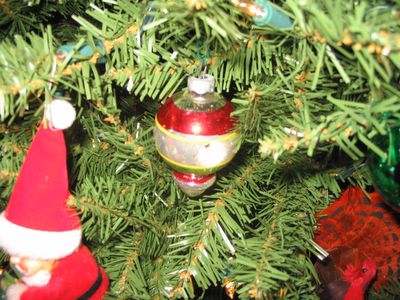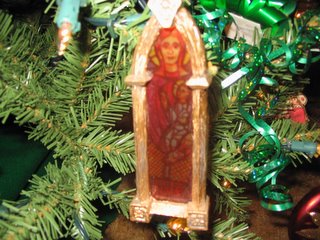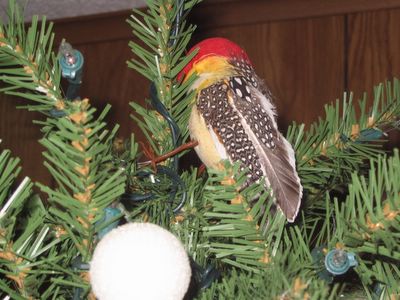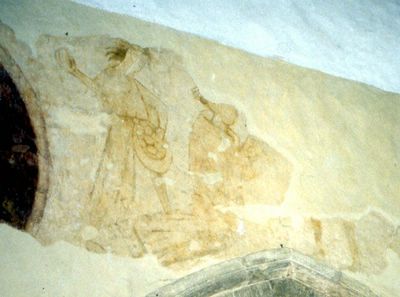Hail the Sun of Righteousness, anyway...


Saint. Sinner. Partner. Pet Mama. Cook. Gardener. Semi-Trained Church Geek. "Here I blog; I can do no other; God help me." Soli Deo gloria!
I keep straining my ears to hear a sound.
Maybe someone is digging underground,
or have they given up and all gone home to bed,
thinking those who once existed must be dead. -- New York Mining Disaster 1941
Does anyone know where the love of God goes
when the waves turn the minutes to hours? -- The Wreck of the Edmund Fitzgerald
"'My God, my God, why have you forsaken me?'" -- Jesus
We live by trust and not by certitude...we live in ambiguity. Life is joy and sorrow, pleasure and pain, good and evil, health and sickness. Having no proof that God cares, we take the "leap of faith." We trust that God is good, that God means us well...we trust that God will bring the shalom.




 It's interesting, during this season when we ponder God coming to us in such a state of utter vulnerability, that washing and feeding -- the same things that we do for the youngest and most helpless among us -- are the ways in which we experience God's sacramental presence in the most powerful way.
It's interesting, during this season when we ponder God coming to us in such a state of utter vulnerability, that washing and feeding -- the same things that we do for the youngest and most helpless among us -- are the ways in which we experience God's sacramental presence in the most powerful way. And how interesting that throughout history the Church has tended to place barriers before people seeking these sacraments -- insisting that baptismal candidates (or their parents) or communicants demonstrate a certain level of "understanding" or merit before the sacraments are administered.
And how interesting that throughout history the Church has tended to place barriers before people seeking these sacraments -- insisting that baptismal candidates (or their parents) or communicants demonstrate a certain level of "understanding" or merit before the sacraments are administered.


"The Virgin Mary...heard the angel out, pondered the repercussions, and replied, 'I am the Lord's servant. May it be to me as you have said.' Often the work of God comes with two edges, great joy and great pain, and in that matter-of-fact response Mary embraced both. She was the first person to accept Jesus on his own terms, regardless of the personal cost." -- Philip Yancey, The Jesus I Never Knew, excerpted in Watch For the Light: Readings For Advent and Christmas, Plough Publishing House
Once upon a time an old woman wearing a red headdress, black dress and white apron was making a batch of bread dough, when a stranger came to her doorway. "I'm terribly hungry," said the stranger. "Would you mind sharing some of your bread with me?" "Sure," replied the old woman. She went to her fire and placed a big piece of dough over it; but as it cooked, it looked so perfect, so beautiful, that she thought, "This is much too nice to give to a stranger." So she took that piece of bread and hid it in the ashes, and instead pinched off another piece of dough to make more bread. But that piece, as it browned over the fire, looked even more beautiful than the first. "This bread is too fine to give away," thought the woman, and hid that bread as well. "The stranger can have this last bit of dough instead." She set the last little piece of her dough over the fire; but it too grew large and golden and lovely. "I can't possibly give away such a fine piece of bread," thought the old woman. She slipped the last of the bread into the ashes with the others.
She went back to the stranger. "I'm sorry," she lied, "but my dough fell into the fire and was ruined. So I have no bread to give you."
At this point the stranger revealed himself: He was Nanabozho, the great teacher and magician of The People, son of a human mother and The West. "You greedy, selfish woman! Because you would not show hospitality to a hungry stranger, you yourself will know hunger, and will have to forage for your food in the very wood of the trees!" And with that the woman was turned into a woodpecker. And even now you can see her red headdress, and black clothing, and white apron, and hear her remorseful call as she flies through the forest.



'Twas the voice of the Lobster; I heard him declare:
"You have baked me too brown; I must sugar my hair." -- Lewis Carroll






Long ago God spoke to our ancestors in many and various ways by the prophets, but in these last days he has spoken to us by a Son, whom he appointed heir of all things, through whom he also created the worlds. He is the reflection of God’s glory and the exact imprint of God’s very being, and he sustains all things by his powerful word.All things -- pomegranates and plums, arachnids, birds, insectivores, glassblowers and Christmas-tree-factory workers. And not only that, but the One in whom and through whom and for whom all things were made also chose to become part of the creation, arriving pretty much the way the rest of us do. Who knew you could get so much Incarnational theology out of fruit, a spider, a bird and a hedgehog?

